Vindolanda Wooden Tablets: Ancient Military And Private Correspondence Left By Departing Roman Troops
A. Sutherland - AncientPages.com The fort of Vindolanda, one of the earliest Roman garrisons, built by the Roman army in England, is one of Europe's most important Roman archeological sites.
Vindolanda Roman fort. Image credit: Chris Gunns - CC BY-SA 2.0
It guarded the Stanegate, the Roman road from the River Tyne to the Solway Firth, and was situated behind Hadrian’s Wall, near the modern village of Bardon Mill in Northumberland, England.
It's worth mentioning that "literally the "Stone Road" was not just a road but a frontier system that predates Hadrian's Wall. The road links Corbridge to Carlisle and has a fort system that appears to repeat in a pattern of large - small - large - small, etc. The first fort in Cumbria from the east is Throp, one of the small ones. Note that a small fort at Crosby would be expected but one has not been found (yet) as wrote A Gazeteer, "The Roads Of Roman Britain",
Fort Vindolanda was originally constructed in turf and timber before Hadrian's Wall was built around 122 AD, and was repaired and rebuilt several times. Vindolanda garrison was destroyed and completely rebuilt at least nine times. Each community left its own unique features on the surrounding landscape.
To this famous Roman fort, there are related the Vindolanda Letters also known as the Vindolanda tablets, the oldest surviving, handwritten in Latin documents found in Britain. They are considered the best source of information about life on the northern frontier of Roman Britain.
Sandal was found at Vindolanda and is now on display in the Museum. Image credit: Colgill - CC BY-SA 4.0
The first post-Roman record of the ruins at Vindolanda was made by the antiquarian William Camden, in his Britannia (1586). Occasional travelers reached the site over the next two hundred years, and the accounts they left are useful because they predate much of the stone-stealing that has damaged the site.
Excavation of the fort began in 1970 and the tablets had not been recovered until 1973 when archaeologist Robin Birley unearthed them at the site of a Roman fort in Vindolanda, northern England.
Excavations yielded around 1,000 wooden writing tablets left by departing troops and well-preserved in the environment of the peat.
The texts of 752 tablets have been transcribed, translated, and published but archaeologists still find new tablets of Vindolanda. Credits: British Museum.
Most of the 752 Vindolanda letters were written during the period 92-102 AD and some of them are dated from 103 to 130 AD.
Written in ink on postcard-sized sheets of wood, due to a lack of papyrus), the longer documents were tied together by punching a hole in the corner. The writing tablets used the local woods – birch, alder, or oak taken from young trees.
The letters enable us to imagine community life and give a unique insight into the Roman official military correspondence, which demonstrated the army’s work assignments, efficiency, the soldiers’ food, and how they did spend their time off.
Many of the letters are strictly private, such as one recorded on the tablet 346, which reveals the following message:
‘I have sent you ... pairs of socks from Sattua, two pairs of sandals, and two pairs of underpants.’ It was obviously a bit cold for soldiers on the northwest frontier of the Roman Empire.
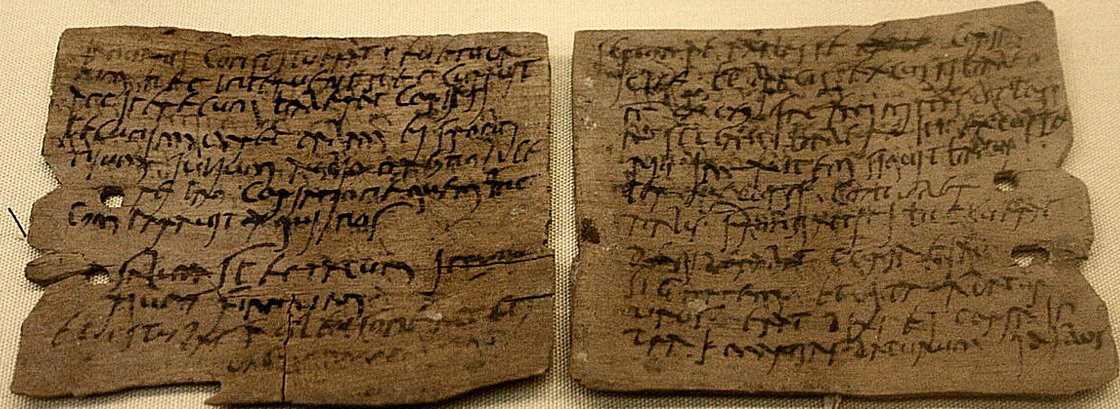 Letter from Octavius to Candidus concerning supplies of wheat, hides, and sinews. Credits: British Museum
Letter from Octavius to Candidus concerning supplies of wheat, hides, and sinews. Credits: British Museum
In one letter (tablet 291) Claudia Severa invites her sister Sulpicia Lepidina to her birthday party held in 100 AD.
"On 11 September, sister, for the day of the celebration of my birthday, I give you a warm invitation to make sure that you come to us, to make the day more enjoyable for me by your arrival… I shall expect you, sister. Farewell, sister, my dearest soul, as I hope to prosper, and hail."
The men stationed at Vindolanda fort were Germans writing in Latin, serving the Roman army in England. Through these letters recorded on sheets of wood, these people remained connected with other soldiers and their families living across the Empire.
This impressive collection of letters includes a list of household goods, an official account of troop strength, a memorandum on the customs of the Britons, a letter of recommendation to the provincial governor, a birthday invitation from the wife of the garrison commander, and a letter from one soldier rebuking another for not writing more often.
There are also official reports, administrative accounts of the garrison, and personal letters.
Written by – A. Sutherland AncientPages.com Staff Writer
Updated on September 22, 2022
Copyright © AncientPages.com All rights reserved. This material may not be published, broadcast, rewritten or redistributed in whole or part without the express written permission of AncientPages.com
Expand for referencesMore From Ancient Pages
-
 Skeleton Of Last Trojan Discovered – Ancient City Of Troy May Have Been A Religious Sanctuary – Archaeologists Say
Archaeology | Sep 21, 2018
Skeleton Of Last Trojan Discovered – Ancient City Of Troy May Have Been A Religious Sanctuary – Archaeologists Say
Archaeology | Sep 21, 2018 -
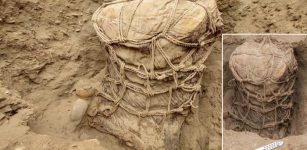 A 500-Year-Old Funerary Bundle And Pottery Probably Belonging To Ychsma Culture – Unearthed Near Lima, Peru
Archaeology | May 22, 2023
A 500-Year-Old Funerary Bundle And Pottery Probably Belonging To Ychsma Culture – Unearthed Near Lima, Peru
Archaeology | May 22, 2023 -
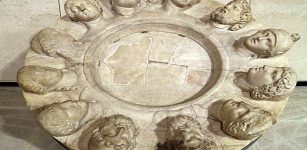 ‘Altar Of Twelve Gods’ At Gabii, Italy Was Once An Important Ancient Place
Civilizations | Apr 1, 2023
‘Altar Of Twelve Gods’ At Gabii, Italy Was Once An Important Ancient Place
Civilizations | Apr 1, 2023 -
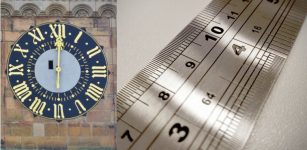 Why Did We Abandon Roman Numerals?
Ancient History Facts | Apr 25, 2019
Why Did We Abandon Roman Numerals?
Ancient History Facts | Apr 25, 2019 -
 Mysterious Disappearance Of Louis Le Prince – Murder And Cover-Up?
Featured Stories | Jun 27, 2020
Mysterious Disappearance Of Louis Le Prince – Murder And Cover-Up?
Featured Stories | Jun 27, 2020 -
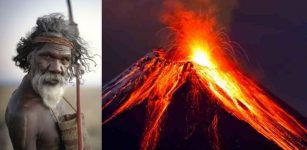 Aboriginal Myth Of Kinrara’s Eruption 7,000 Years Ago Confirmed True By Modern Science
Archaeology | May 14, 2017
Aboriginal Myth Of Kinrara’s Eruption 7,000 Years Ago Confirmed True By Modern Science
Archaeology | May 14, 2017 -
 Massive Fortress Buhen In Ancient Capital Of Egyptian Nubia
Archaeology | Mar 20, 2017
Massive Fortress Buhen In Ancient Capital Of Egyptian Nubia
Archaeology | Mar 20, 2017 -
 Long-Lost Anglo-Saxon Monastery Ruled By Queen Cynethryth Of Mercia Discovered By Archaeologists
Archaeology | Aug 19, 2021
Long-Lost Anglo-Saxon Monastery Ruled By Queen Cynethryth Of Mercia Discovered By Archaeologists
Archaeology | Aug 19, 2021 -
 Strange Ancient Artifact Found In New Jersey May Be Evidence Of A Long-Lost Advanced Civilization
Featured Stories | Jun 27, 2024
Strange Ancient Artifact Found In New Jersey May Be Evidence Of A Long-Lost Advanced Civilization
Featured Stories | Jun 27, 2024 -
 Cedar – Sacred Tree With Medicine Power In Native American Beliefs
Featured Stories | Aug 26, 2024
Cedar – Sacred Tree With Medicine Power In Native American Beliefs
Featured Stories | Aug 26, 2024 -
 Medieval City Dating Back To The Great Northern War Discovered In Tartu, Estonia
Archaeology | Jan 8, 2021
Medieval City Dating Back To The Great Northern War Discovered In Tartu, Estonia
Archaeology | Jan 8, 2021 -
 Researchers Find An Elusive European Ancestor Of Lager Yeast In Ireland
Archaeology | Dec 14, 2022
Researchers Find An Elusive European Ancestor Of Lager Yeast In Ireland
Archaeology | Dec 14, 2022 -
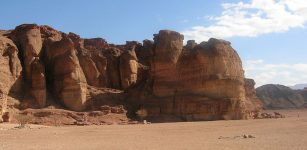 3,000 Years Ago Human Activity Destroyed Vegetation And Irreparably Damaged The Timna Valley Environment
Archaeology | Sep 23, 2022
3,000 Years Ago Human Activity Destroyed Vegetation And Irreparably Damaged The Timna Valley Environment
Archaeology | Sep 23, 2022 -
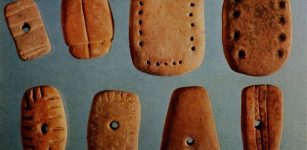 Intriguing Sumerian Clay Tokens – An Ancient ‘Book Keeping’ System Used Long After Writing Appeared
Artifacts | Jul 8, 2017
Intriguing Sumerian Clay Tokens – An Ancient ‘Book Keeping’ System Used Long After Writing Appeared
Artifacts | Jul 8, 2017 -
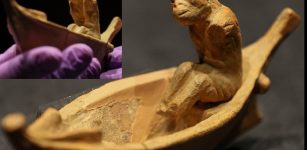 The 2,400-Year-Old Figurine Of Charon -The Ferryman Of The Dead – On Display In Izmir, Turkiye
Archaeology | Nov 21, 2022
The 2,400-Year-Old Figurine Of Charon -The Ferryman Of The Dead – On Display In Izmir, Turkiye
Archaeology | Nov 21, 2022 -
 Unusual Old Stone Map Found In The American Southwest
Featured Stories | May 9, 2024
Unusual Old Stone Map Found In The American Southwest
Featured Stories | May 9, 2024 -
 Hunter-Gatherer Genes Helped Early European Farmers Survive Disease – New Study
Archaeology | Mar 24, 2023
Hunter-Gatherer Genes Helped Early European Farmers Survive Disease – New Study
Archaeology | Mar 24, 2023 -
 North America’s First People May Have Arrived By Sea Ice Highway 24,000 Years Ago
Archaeology | Dec 16, 2023
North America’s First People May Have Arrived By Sea Ice Highway 24,000 Years Ago
Archaeology | Dec 16, 2023 -
 Author’s Encounter With A Mysterious Not Of This World Entity Inside Callixtus Catacombs
Featured Stories | Apr 5, 2020
Author’s Encounter With A Mysterious Not Of This World Entity Inside Callixtus Catacombs
Featured Stories | Apr 5, 2020 -
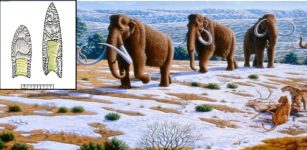 Study: Paleo-Americans Hunted Mastodons, Mammoths And Other Megafauna In Eastern North America 13,000 Years Ago
Archaeology | Jun 15, 2023
Study: Paleo-Americans Hunted Mastodons, Mammoths And Other Megafauna In Eastern North America 13,000 Years Ago
Archaeology | Jun 15, 2023



